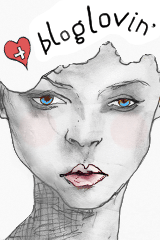Ostensibly, weddings are an event where a bunch of people witness a couple’s promise to pair-bond for life. But, no matter how you slice it, it doesn’t feel like witnessing the writing of a will or the testimony of somebody in court. Audience members are just as caught up in the day as the bride and groom.
What’s going on here? Why do weddings make us all feel so warm and fuzzy inside?
For years, researchers have been investigating the link between love, oxytocin and empathy. It turns out that all three go hand in hand. The more you have of one, the more you get of the other two.
This got them thinking: perhaps that’s why audiences are always so loved up at the end of a wedding. It’s not just the fact that booze is flowing out of every orifice. People actually just get caught up in the spectacle. It’s what life is all about. Modern weddings are a massive lovefest.
Interestingly, you can track the effects of weddings on guests’ biomarkers. The University of Exeter and the magazine New Scientist, teamed up to conduct a study of how “loved-up” people who attended a wedding were, using biological correlates. They wanted to see whether they could track the so-called “biochemical high” we all get when we experience a loving environment.
They tracked over a hundred guests at a barn wedding venue to see what happened to their body chemistry over the course of eight hours of the wedding. Test tubes were ordered and blood samples collected (yes, that actually happened at a wedding). And all the results were eventually compiled in a big database.
The researchers wanted to see whether oxytocin levels of guests changed throughout the day. And if so, by how much. Oxytocin is a trace chemical in the blood. The body only produces a tiny amount of it. Detecting it, therefore, is somewhat challenging.
The solution is to use something called a centrifuge - a big barrel that spins the blood sample very fast, separating it into different constituents. The researchers then measured the microscopic quantities of oxytocin - the love hormone - before and after the wedding. And guess what - for most guests, it was higher.
You might think that you could get the same effect by just putting a bunch of people in a room and having a big party - and you’d be right. But the researchers did something clever. They created a model of how loved-up people were, based on their proximity to the bride. And guess what they found: the closer the relationship, the more oxytocin levels changed,
with the groom and mother of the bride most affected by the day’s events.
So what does all this mean? It turns out that weddings might be more than a legal proceeding. The church and state have commandeered modern weddings today. But they’re an ancient ritual - something people were doing well before we even had civilization. It wouldn’t be surprising, therefore, for them to be baked into our psychology.
*Header image source Pexels - CC0 License
FOLLOW GIRLGONEDREAMER:
Twitter | Facebook | Bloglovin' | Instagram
Subscribe to GirlGone Dreamer by Email
Twitter | Facebook | Bloglovin' | Instagram
Subscribe to GirlGone Dreamer by Email


No comments :
Post a Comment
Note: only a member of this blog may post a comment.